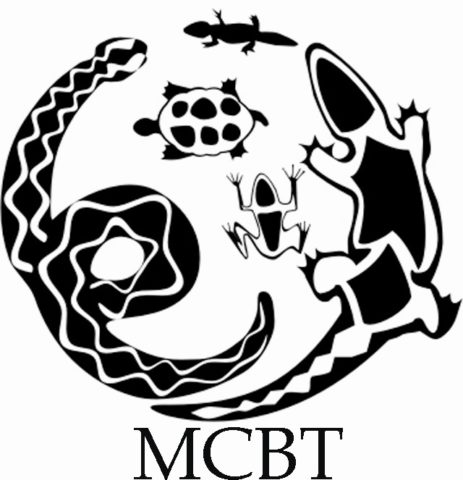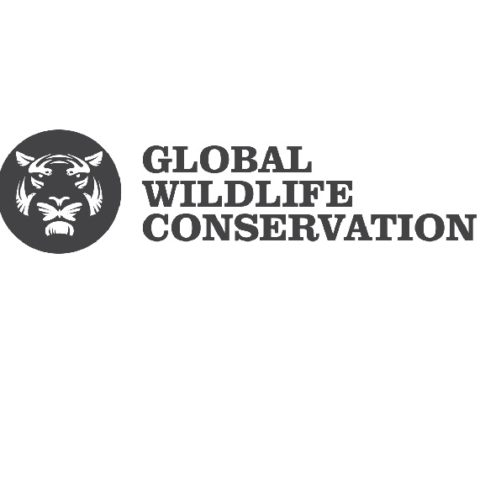Conservation Actions
Most conservation efforts for C. siamensis were initiated in the past decade and are relatively recent. More conservation work for the species has been conducted in Cambodia than any other range state, including extensive status surveys and a long-term programme by the Government of Cambodia’s Forestry Administration and Fauna & Flora International. This programme has achieved the monitoring and protection of breeding sites, training of ranger patrols, and community-based conservation initiatives (Daltry et al. 2006, Simpson and Ratanapich 2007, Simpson et al. 2006a). Veal Veng Marsh, the Areng River, and the Sre Ambel/ Kampong Saom River are the focus of enforcement patrols and community-based conservation management, which have demonstrated success in reducing poaching since 2001 (Daltry et al. 2006, Simpson and Ratanapich 2007, Simpson et al. 2006a, Oum et al. 2010). Additional community sanctuaries are planned in northeast Cambodia and a national re-introduction program will be launched in 2012 (Daltry and Starr 2010, Siamese Crocodile Task Force in prep.).
Elsewhere, status surveys were conducted in Lao PDR between 2003 and 2008, conservation priorities were identified (Bezuijen et al. in press) and a management plan to protect breeding sites was prepared for one province (Cox and Somvongsa 2008). Community workshops were held in 2006 and 2007 to document local knowledge of crocodiles (Bezuijen et al. 2006, Mollot et al. 2007). Most C. siamensis localities in Lao PDR are outside the national protected area system and conservation will rely on community-based approaches. In Thailand, a re-introduction programme was initiated by the Royal Thai Forest Service and Crocodile Management Association of Thailand, with 20 crocodiles released in Pang Sida National Park in 2005 and 2006 (Temsiripong 2001, 2007). Few crocodiles were detected during subsequent monitoring (Temsiripong 2007) and further releases are being considered. Severe flooding in Thailand in 2011 hindered the implementation of some re-introduction plans (Y. Temsiripong pers. obs.). In Viet Nam, 60 captive individuals were released in Cat Tien National Park between 2001 and 2004 (Polet 2006) and the population has been irregularly monitored since then. The most recent surveys (2010-2011) confirmed that the population has increased in size, but that crocodiles continue to be hunted by local residents (Pahl 2012). In Indonesia, Mesangat Lake is owned by an oil palm company, and in 2010 the company entered into a partnership with a local foundation, Yayasan Ulin, to jointly manage habitats at the lake (R. Stuebing in litt.).
The large captive populations of C. siamensis held on farms (see Use and Trade) represent a potential source for re-introduction programs, and farms in Thailand and Viet Nam have donated C. siamensis for this purpose. Genetically pure C. siamensis have been found in captive holdings in Cambodia (Starr et al. 2009), Thailand (Srikulnath et al. 2012) and Viet Nam (Fitzsimmons et al. 2002).
At the invitation of range states, the IUCN SSC Crocodile Specialist Group has conducted reviews and recommendations for the trade and management of captive C. siamensis and other crocodilians, in Cambodia (Jelden et al. 2005), Indonesia (Webb and Jenkins 1991a), Thailand (Webb and Jenkins 1991b) and Viet Nam (Jelden et al. 2008).
Action Plan
Siamese Crocodile Action Plan 2010
Location Information
Crocodylus siamensis historically occurred over much of mainland Southeast Asia as well as parts of Indonesia. Its current distribution is greatly diminished and fragmented. Extant populations are in Cambodia, Indonesia, Lao PDR, Thailand and Viet Nam. In Viet Nam, wild populations are possibly extirpated, the first range nation where this has occurred, although a reintroduction programme has been implemented in one site (see below). Most locations occur between 50 and 200 m elevation but localities in Cambodia at Veal Ven Marsh (560 m; Daltry et al. 2003) and the upper Tatai River (730 m; B. Simpson pers. comm.) are higher. Summaries of national distribution are as follows.
Cambodia: Field surveys conducted since 2000; confirmed C. siamensis localities are from 35 sites in 21 river systems of 11 provinces, mainly in remote parts of southwest and northeast Cambodia (Daltry and Chheang 2000; Daltry et al. 2003; Platt et al. 2004, 2006; Simpson and Han 2004; Simpson et al. 2006a; Timmins 2007; Bezuijen et al. 2009). The largest remnant populations are in the Srepok, Sekong, Sre Ambel/Kampong Saom, Pursat, Koi, Kep, Tatai and Areng Rivers and Veal Veng Marsh.
Indonesia: Mesangat Lake in the Mahakam River system, East Kalimantan Province (Borneo), supports the only known extant population outside mainland Southeast Asia (Cox et al. 1993, Cox 2004, Ross et al. 1998; Kurniati et al. 2005). Research in 2010-2011 by N. Behler confirmed the persistence of this population. Unconfirmed local reports of C. siamensis are from Central Kalimantan Province (Ross et al. 1998). Museum specimens indicate the species historically occurred in Java (Ross 1990, 1992) but given the severe loss of wetland habitats there, it is unlikely any populations remain.
Lao PDR: Field surveys conducted between 2003 and 2008; confirmed C. siamensis localities are from nine river systems in five provinces, but extant populations are known from only seven river systems in four provinces (Bezuijen et al. in press). Surveys confirmed previous reports (Salter 1993, Sawathvong 1994) that many local populations are now extirpated. Extant populations are in the Xe Champhone, Xe Banghiang, Xe Bangfai and Xe Xangxoy river systems (Savannakhet Province), Xe Pian-Xe Khampho river systems (Attapu Province), Xe Don River (Salavan Province) and Phou Khaokhouay National Protected Area (Bolikhamxay Province) (Bezuijen et al. in press). Most wetlands in Lao PDR remain unsurveyed for crocodiles and it seems likely that other C. siamensis localities will be documented.
Malaysia: A single reference to a ‘fresh-water crocodile’ in northern Peninsular Malaysia (Robinson and Annandale 1904 cited by Smith 1919) was considered by Smith (1919) to be ‘probably referable to this species’. There are no known records from Sarawak or Sabah (Sebastian 1993). There is no other information to suggest that C. siamensis occurred in Malaysia.
Myanmar: One record of crocodiles and eggs, from the Mekong River (Garnier 1885 - see Garnier 1996); no other known records, although most wetlands in Myanmar remain unsurveyed for crocodiles (Thorbjarnarson et al. 2006). The section of the Mekong in Myanmar (~200 km long) is currently under restricted access and off-limits to international surveys. Google satellite imagery indicates that much of it retains riverine forest and low human densities: it is possible that some crocodiles may persist (Bezuijen et al. in press).
Thailand: Historically common and widely distributed (Smith 1919, Platt et al. 2002); extant populations are in a small number of scattered localities in central and western Thailand (Kreetiyutanont 1993, Ratanakorn et al. 1994, Platt et al. 2002, Temsiripong 2003). Confirmed sites include Pang Sida and Kaengkrachan National Parks (Platt et al. 2002, Temsiripong 2003).
Viet Nam: Historically present in southern Viet Nam (Cuc 1994, Cao and Jenkins 1998); wild populations possibly extirpated. Surveys over the past two decades have failed to detect crocodiles in sites they were reported to occur (Platt and Tri 2000, Stuart et al. 2002) except one site, Ha Lam Lake (Phu Yen Province), where at least two individuals were present in 2005 (Nguyen et al. 2005). A single reintroduced population is at Cat Tien National Park (Polet 2006, Murphy et al. 2004), where breeding occurs (J. Thorbjarnarson in litt. July 2009, Pahl 2012).
Geographic Range
Extant
Cambodia, Indonesia, Lao People's Democratic Republic, Thailand, Viet Nam
Population Information
No global population estimate is available for C. siamensis and national population estimates are available for only one range state, Cambodia. Between 100 and 300 wild adults may remain in Cambodia, based on footprints and other evidence (Simpson and Han 2006a, Simpson and Bezuijen 2010 and references therein). Lao PDR may support a similar number of adults (Bezuijen et al. in press). The largest known population at any single site is 55-60 individuals, in Cambodia (Starr et al. 2010), but in both nations most known sites support only one or several individuals. In Thailand, one to several individuals persist in a small number of scattered localities, and nests are sometimes documented (Platt et al. 2002, J. Thorbjarnarson in litt. cited in Bezuijen et al. in press). In Viet Nam, the species may have been extirpated from the wild but a reintroduced population based on 60 individuals released between 2001-2004 at Cat Tien National Park had an estimated population of 100-150 individuals in 2010-2011. A maximum of 80 non-hatchlings was observed and 10-15 adults estimated (Pahl 2012). At Mesangat Lake in East Kalimantan, Indonesia, mark-recapture surveys in 2010-2011 indicated that fewer than 30 individuals may be present, although nearby areas remain unsurveyed (N. Behler unpubl. data).
Wild nests and successful recruitment (i.e. presence of hatchlings) have been documented in all range states, but in low numbers. In Cambodia, nesting has been recorded at 10 localities in eight provinces since 2001, but the number of nest sites is declining and only one to three nests are documented annually (Simpson et al. 2006a). Veal Veng Marsh and the Areng River, both in the Cardamom Mountains, hold the largest wild populations, and each produces one to three nests annually (J.C. Daltry unpubl. data). In Lao PDR, nesting has been documented at eight localities but successful recruitment was confirmed at only five sites (Bezuijen et al. in press). Of four clutches examined in Lao PDR, three were infertile (Bezuijen et al. in press), indicating low female fertility and/or the absence of males. In Thailand, fewer than five wild nests and few hatchlings have been recorded over the past five years, suggesting low clutch fertility (J. Thorbjarnarson in litt. cited by Bezuijen et al. in press; Y. Temsiripong unpubl. data). In Viet Nam, hatchlings observed at Cat Tien National Park in 2010-2011 confirm that breeding persists there (Pahl 2012). At Lake Mesangat in Indonesia, juvenile crocodiles have been observed and one nest has been located (N. Behler unpubl. data).
On the basis of these limited data, the global wild population of C. siamensis may comprise fewer than 1,000 mature individuals.
Threats
Commercial hunting in the mid-twentieth century for the skin trade is considered to be the principal cause for the historical decline of C. siamensis. Current and ongoing threats in virtually all range states include the illegal collection of eggs and crocodiles, habitat loss and degradation, and incidental capture/drowning in fishing gear. In Cambodia, most river systems with extant C. siamensis are targeted for large-scale hydroelectric dams. Construction of some of these dams has already begun and has resulted in the loss of breeding habitat and increased collection and killing of crocodiles (J.C. Daltry unpubl. data). Illegal capture of wild crocodiles to supply local crocodile farms continues in Cambodia. In Viet Nam, over 19 crocodiles were apparently poached at Cat Tien National Park between 2001 and 2012, mainly for local consumption (Murphy et al. 2004, Pahl 2012).
Potential threats in some or all range states include climate change, the potential hybridization of wild populations due to inter-breeding with escaped hybrids, and the risk of genetic depression due to severely low numbers (Jelden et al. 2005, 2008; Bezuijen et al. in press). Viet Nam appears to be the first range state where wild C. siamensis has been extirpated; in 2006, the last known site to support wild C. siamensis (Ha Lam Lake in Phu Yen Province; Nguyen et al. 2005) was flooded for construction of a hydroelectric dam. At Mesangat Lake in Indonesia, key threats to C. siamensis are the incidental capture of crocodiles in fishing gear and disturbance due to electro-fishing activities (N. Behler unpubl. data).
Partners
IUCN Red List Account Link
Please click here to see the species' IUCN Red List Account page.Photo Credits
Jeremy Holden (category and featured image)













